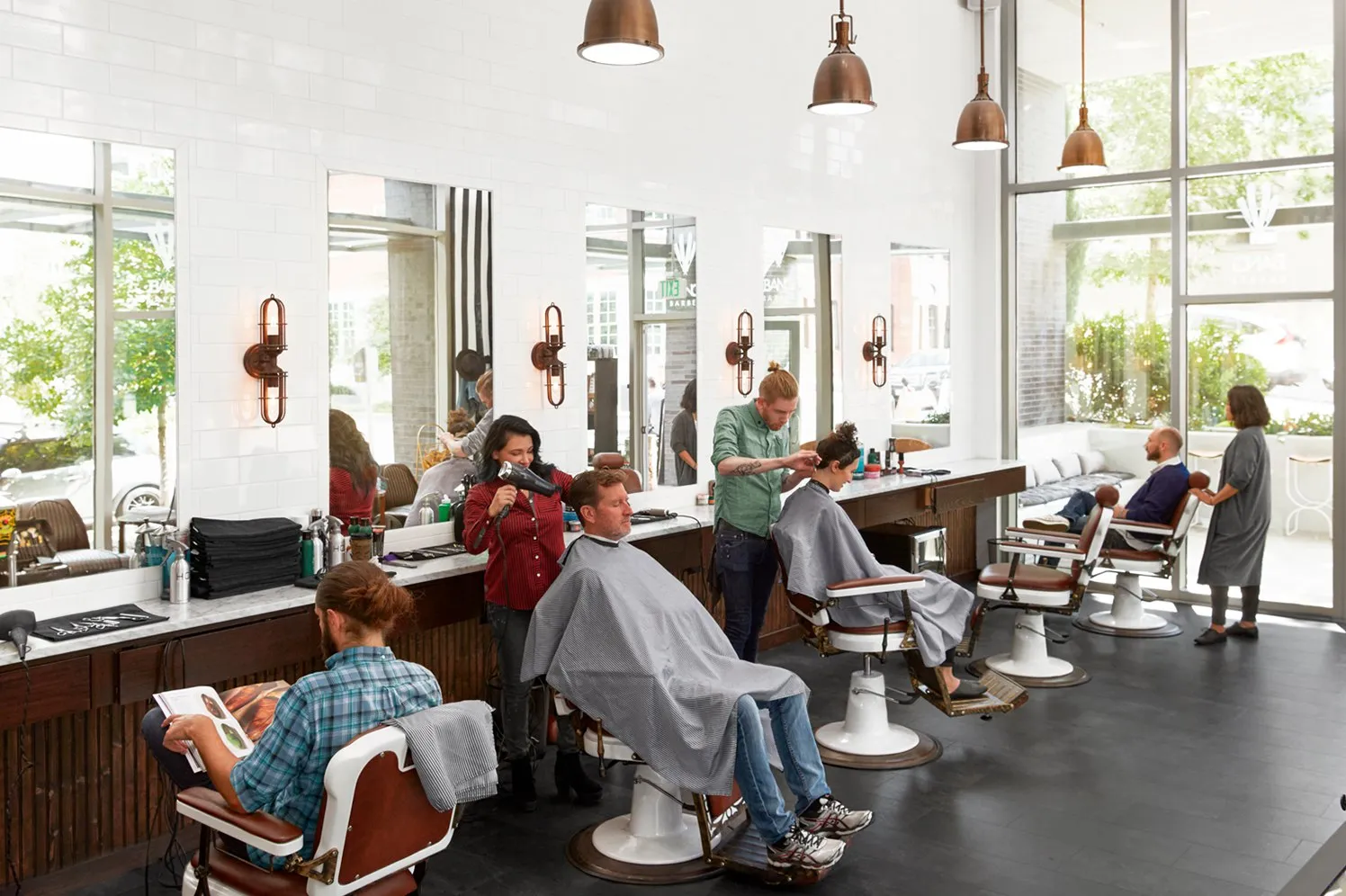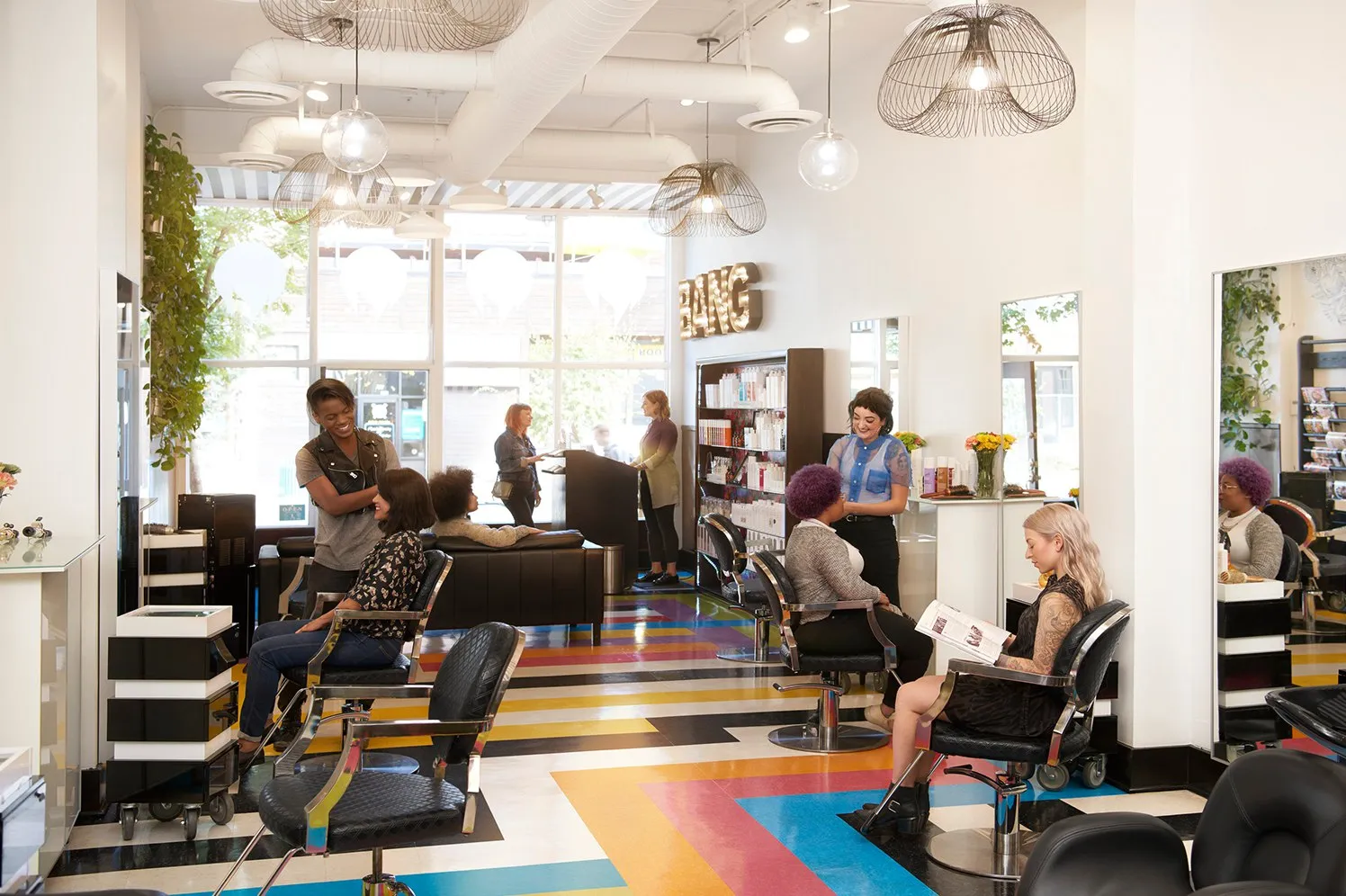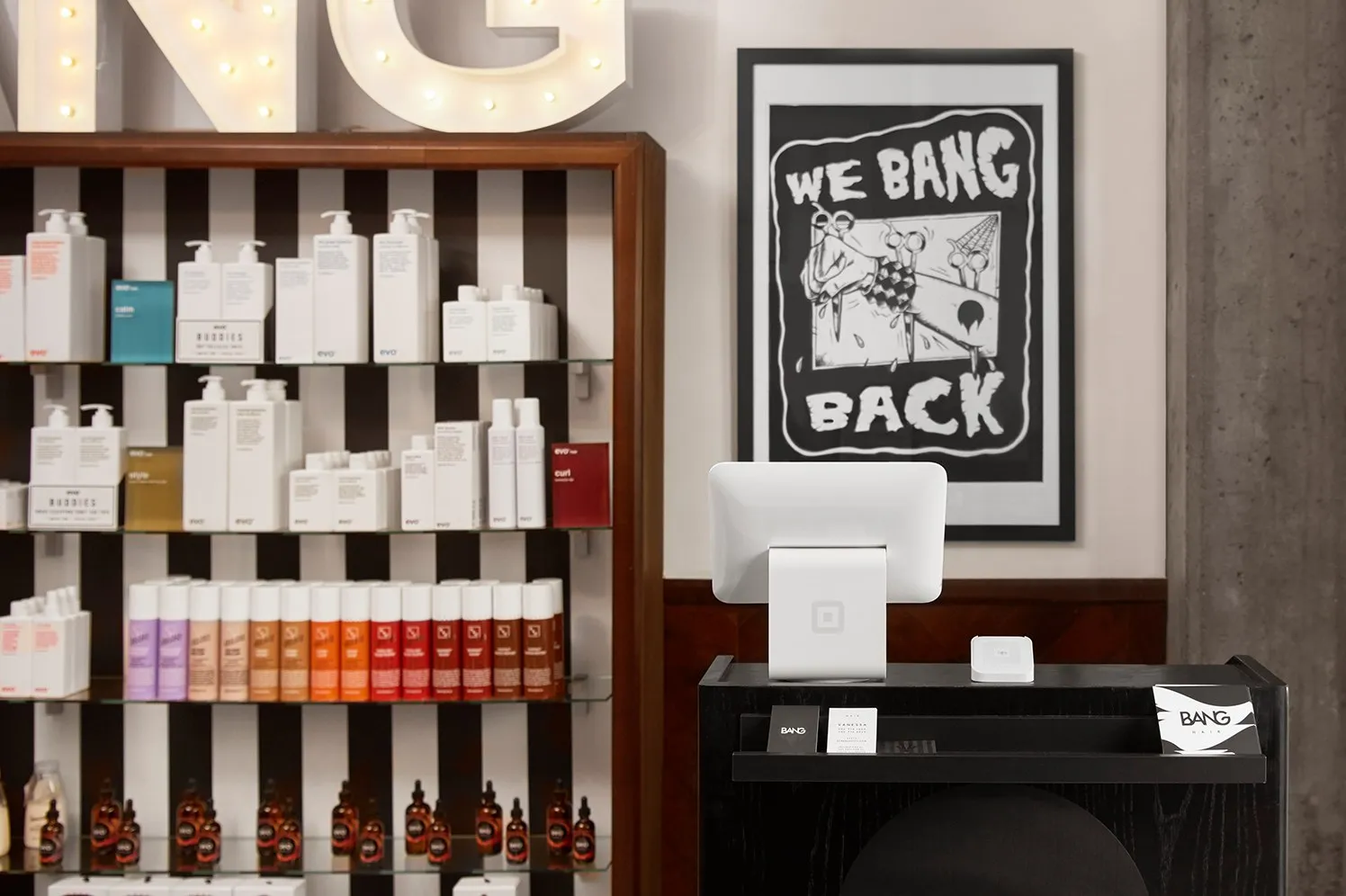Table of contents
So, you want to open a salon? Whether you’re already at the serious planning stages or it still feels like a faraway dream, this guide will help you to move forward with positivity and purpose.
Opening a beauty salon is an exciting adventure and with a bit of thought and a lot of action it can really pay off.
Get your salon business plan right
Your business plan is the place where you’ll document your vision for your salon, organise all your thoughts and ideas and make a case for investors to back you.
You need to include everything from the salon name and location right through to when you expect it to start making a profit.
Include:
- An executive summary and mission statement – a short summary of what your salon is all about
- Company description – more detail on location, services, owners and employees, unique selling points, will it be a straight hair salon or a more rounded beauty offer?
- Market analysis – who are your customers and competitors?
- SWOT (strength, weaknesses, opportunities and threats) analysis
- Marketing plan – how are people going to find out about you?
- Financial information – all your projected incomings and outgoings.
Writing a salon business plan is all about details and specifics. Give a thorough picture of exactly how your salon will look and feel, who the customers will be and how it is going to generate the income you need.
How Much Does It Cost to Start a Salon?
Salon start-up costs are said to range from £5,000 to £50,000. That’s a massive range and represents the wide variety of options there are.
Costs will be much higher if you are kitting out a salon from scratch as opposed to taking over a building that is ready to go. Even if you are taking on an existing salon you are likely to want to put your own stamp on it and will incur some refurbishment costs. Understanding these salon need-to-know costs is crucial for effective budget planning and successful salon setup.
To work out your start-up and running costs, first, determine your fixed costs on a monthly basis. Fixed costs are your salon’s expenses that don’t change with sales volume, and are typically non-negotiable (we call them fixed for a reason).
Some of these include:
- Insurance
- Rent
- Utilities
- Equipment
Variable costs, on the other hand, are easier to manipulate, which can help you cut costs and save money. These are the costs of labour and materials that change with sales volume. Variable costs associated with opening a salon include:
- Staff costs (you might consider renting chairs to self employed stylists and therapists to keep overheads down)
- Products and tools used by hair stylists
- Shipping and delivery costs to replenish hair product
- Advertising and marketing
After you determine your salon’s expenses on a monthly basis, you should create a revenue forecast for your first year, and then determine your break-even point, which is where your revenue and expenses zero each other out.
Use this information — your expenses and projected revenue — to create a budget that keeps you on track and helps you avoid overspending.
What Salon Equipment Do You Need?
You’ve just signed the papers and picked up the keys to your new salon space. One of the first things you need to do is fill your empty space.
While it’s easy to get wrapped up in buying equipment, furniture and decor, you have to remember that these things come at a price (and it’s often a high one).
For a hair salon equipment makes up a large portion of your start-up costs, and many owners tend to overspend. To keep costs reasonable for salon equipment, create a basic salon equipment checklist, the fundamentals will include:
- Salon stations that include a chair, sink, mirror and storage space for hair and styling products
- Shampooing stations with a chair, shampoo bowl and storage space for product
- Drying stations for use during colouring services
The amount of equipment you need depends on the size of your salon and the number of employees you decide to hire. Most salons have one salon station per employee, but hair stylists with opposite working schedules may be able to share a station.
A small reception area is also necessary for most salons. You may want a seating area for clients waiting to see your stylists, as well as a front desk where you can greet customers. You can also display promotional offers for your business here. A point-of-sale system is a must, Opting for a mobile system could even allow clients to pay while still in their chair.
Pro tip: Most of the salon equipment and furniture can be bought at wholesale prices provided you show proof that you are a qualified professional. It can be a great way to save money if you are buying in bulk.
How to Hire the Salon Dream Team
Hiring the right staff for your salon is essential as the quality of your staff’s work makes or breaks your beauty business. Where once salons were almost exclusively about hairdressing, many now offer manicures, pedicures, tanning, hair removal, eyebrow sculpting or makeup services too. Look for a range of skills when recruiting.
Before you start interviewing, create a list of what you are looking for in an ideal candidate. Here are some things to consider:
- Skill set: The candidate’s skill set and capacity to learn are both important to think about when interviewing. Think about the years of experience you want your stylists to have. Do you want your hair stylists to have proficiency in colouring? Or are you going to hire dedicated colourists?
- Attitude: A candidate’s attitude and work ethic determines their dependability, ability to work with others, and their overall customer service.
- Personality: A candidate’s personality should match the company culture you infuse in the salon. Whether you are aiming to be an upscale boutique or a family-focused shop, you want your company culture to be naturally instilled in your employees. Think about how you want to define your company culture and the traits that each employee should have.
Before you hire anyone, make sure you’ve registered as an employer with Her Majesty’s Revenue and Customs (HMRC). This will allow you to begin a Pay As You Earn (PAYE) payroll allowing you to pay your staff while having correct income tax and National Insurance collected.
When you start to hire, make sure you’re following the correct procedures for hiring employees. You need to confirm their eligibility of staff to work in the UK, run the correct background checks (like getting in touch with references), as well as making sure they’re fully qualified.
Once you have your team in place, consider measures to prevent employee turnover. Here are a few ways to boost employee engagement and retain staff:
- Build strong relationships with your direct reports and encourage team bonding activities outside of working hours.
- Outline a career path for employees and give your hair stylists an opportunity to advance.
- Promote from within before you hire outside your salon; this encourages stylists to stay.
- Offer competitive compensation compared to salons in the area.
- Provide perks like flexible hours, commuter benefits, birthday recognition and regular happy hours to keep your employees feeling valued.
Build A Salon Marketing Strategy
Marketing your salon well is a way to get customers through the door and build up your client base. It’s never been easier to promote your salon. Social media offers masses of opportunity.
Although finding the time for marketing can feel tricky, coming up with a realistic plan will help keep you on track.
Think about creating a simple website, establishing a Facebook page and Instagram profile and updating them regularly. Encouraging your customers to tag your salon after treatments is also a great way to attract new customers and they’ll love showing off their new hair or nails.
Why a marketing strategy is important for a new beauty salon
Customers tend to be pretty loyal to their hairdresser and the same can be said for other beauty treatment providers so trying to build up a customer base relies on promoting it.
Whilst consumers looking for a new salon value personal recommendations, research has shown they also look to social media and online reviews which means having loads of tagged photos will be great for business.
It’s important to have a marketing strategy because you need people to know what you offer and why it is better than their current salon. Creating a strategy also allows you to fit marketing into your priority list and not let it get forgotten.
You’re likely to be investing a lot of yourself, your dreams and your money into your new salon so you want to have people queuing up for your services.
Social media marketing for your salon (Instagram, Facebook)
Hair and beauty services are very visual trades, creating great opportunities for eye-catching social media posts and pictures. In the UK, 82% of internet users have a social media account and Facebook remains the most used social media app.
Getting your salon on Facebook or Instagram is easy. Use Facebook analytics for insight into your customers online behaviours and what content works. Not only will social media help you at launch but it can help businesses to grow too.
Taking Payments at the Salon
Once you have stocked your salon with supplies and hired stellar stylists, it’s almost time to open your doors. But before you do, you want to make sure you have a way to accept payments and make money.
Let’s start with taking payments. You want to look for a payments processor with clear pricing and no hidden fees. Your payments system should allow you to take whatever form of payment your clients want to use, including contactless card, chip and PIN and mobile payments like Apple Pay.
When you are assessing different payments processors, be sure to ask the following questions:
- What is the setup process like?
You should look for a payments processing system that is easy to set up. - How fast will deposits hit your bank account after a transaction?
You want to get paid for your services quickly and not endure lagging processing time. - Is the payments processor secure?
A payments system should have security measures and be PCI compliant. Ask about chargeback protection and fraud detection to get a better sense of how protected you are.
But don’t think of your payments processor in a silo. Ideally, you want your payments processor to be integrated with a point of sale that can help you run your entire business. A But don’t think of your payments processor in a silo. Ideally, you want your payments processor to be integrated with a point of sale that can help you run your entire business. A salon point of sale can integrate your payments system with other salon operations — like appointments software marketing and team management — to make your day-to-day management more efficient.
In fact, the right salon POS system can actually act as a receptionist, which can aid to your salon scheduling strategy. By integrating your online scheduling tool with your POS, customers can access hair stylists’ calendars and book appointments 24/7.
All of these integrations can give you a more holistic view of your salon and help you manage your business easily and with efficiency.
Why Do Salons Fail?
Sadly, not all new salons survive. Being aware of the reasons some fail will help you to avoid those mistakes when opening a salon.
Here are five reasons salons fail:
- Inadequate cash reserves. You need cash reserves for unexpected costs and fees that you may incur when you are opening a salon.
- Lack of industry experience. Without expertise in the industry, you can struggle with day-to-day operations and forecasting for future growth. Many top-performing salon owners have been in the industry for many years.
- Failure to keep up with trends. Salon trends change frequently, and sticking to your old ways can lead to a downturn in business. Promote continued education for your staff and encourage them to learn new skills and expand their services.
- Failure to manage appointments. Salon owners who find it difficult managing walk-in appointments and recurring clients often have a hard time staying afloat. It is essential to warmly welcome walk-in customers without tarnishing relationships with existing clients and bogging down the scheduling system.
- Competition. Because of the industry’s saturation, competition is a top struggle for many salon owners. Owning a salon is a lucrative business that attracts a lot of entrepreneurs, so it is important to constantly assess neighboring salons and remain competitive with prices, services, and overall customer service.
Fulfil Your Dream of Opening a Salon
There’s a lot to think about when opening a salon, but so much ahead in terms of personal and financial success.
Grasp the moment and make your professional dreams come true. Flesh out that salon business plan, get your finances in order, style your salon, assemble your team and then tell the world about it.
Many others are already making it work and you can too.
How to start a business: A guide for new owners
![]()















